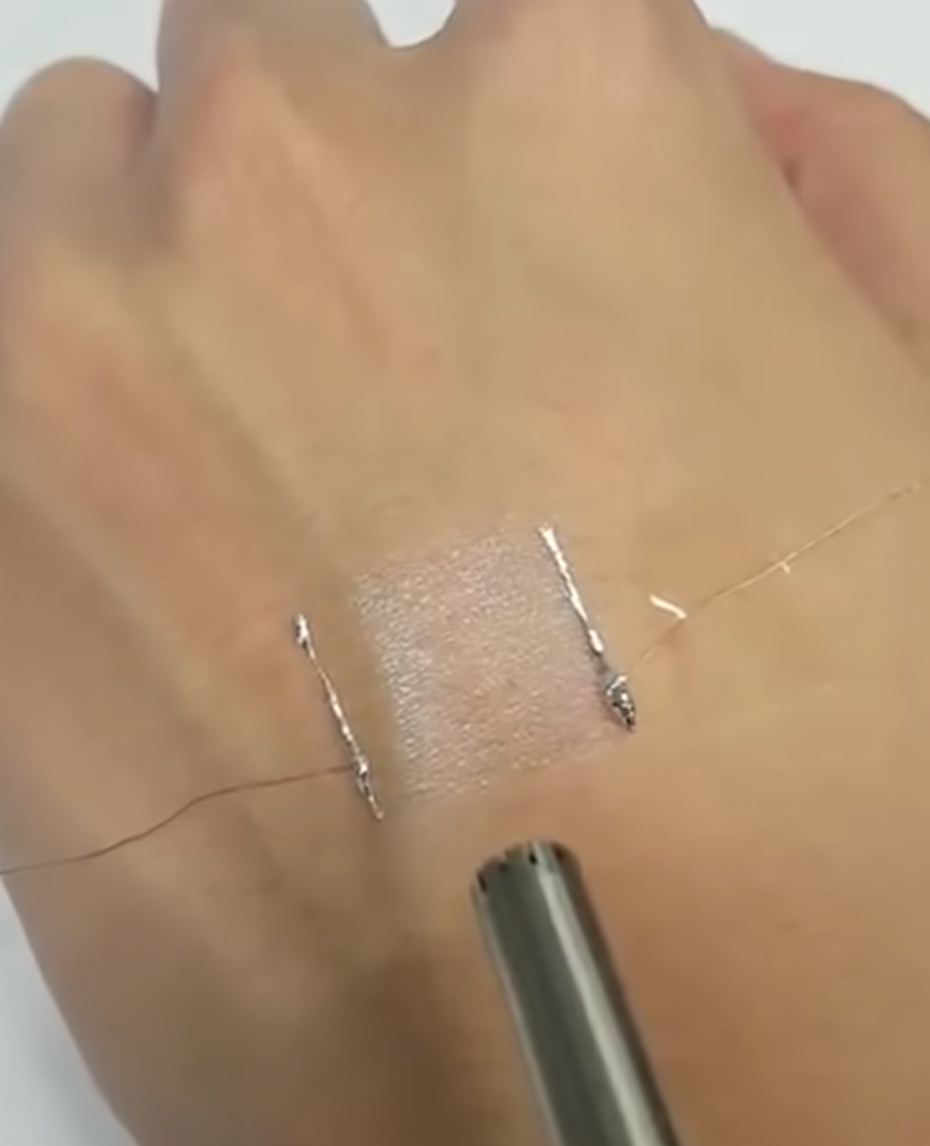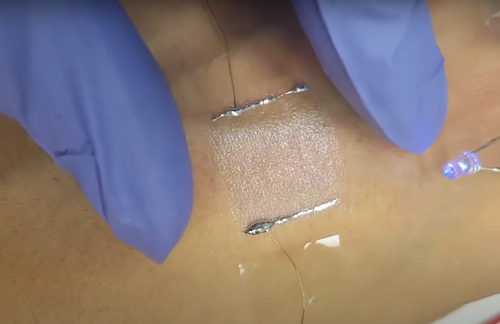From ceiling acoustics in cathedrals to hulking boomboxes of the wild 90s, audio gear has kept shrinking. As we spent our innocent formative years ogling at the itty-bitties of supermodels in magazines, modern technology miniaturized speakers into something as small as AirPods.
Now, the next frontier for wearable speakers is the skin. The engineering wizards over at the Ulsan National Institute of Science and Technology in South Korea have taken the idea of speakers and integrated it into a paper-thin artificial skin.

Made out of extremely thin silver wires enmeshed inside a polymer matrix, the transparent patch doubles as a speaker when placed inside a person’s ear. I can already see law enforcement agencies ordering this by the bucketloads as the most discrete form of audio communication.
When patched near the throat area, a modified version of this transparent nanomembrane serves as a microphone. And here’s the best part. You don’t even have to make an audible sound for the skin patch to pick up your voice. It can sense the vibrations within your vocal cords and turns them into an electrical signal.
The membrane is made up of silver wires and layers of polymer, giving it a flexible and transparent appearance that is good enough to transmit heat and electrical signals. During the test phase, the impressively thin patch was able to identify a person’s voice with 98% accuracy at a task like summoning Siri on an iPhone.
For now, the skin-based speaker sounds a bit tinny, but experts are at work to refine the sound quality as well as the volume output. Just don't expect it to go CD-quality anytime soon. You can check out the fundamental science behind this skin-based speaker here, and go full nerd mode here.

